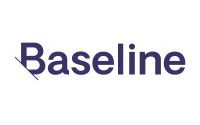Three Emerging Trends in U.S. Private Lending That Canada Should Be Watching
Abstract: Explore three transformative trends reshaping U.S. private lending and their potential impact on Canada’s financial landscape. From aggregator-driven origination models to the rise of rated securitizations and AI-powered technologies, these developments suggest a future where Canadian lenders could leverage national capital more effectively, lower borrowing costs through securitization, and enhance operational efficiencies with advanced data-driven solutions. While regulatory and market differences exist, these trends offer valuable insights for stakeholders navigating cross-border lending and fintech innovation.
While the Canadian private lending market evolves at its own pace, the U.S. market—vast, diverse, and highly competitive—is undergoing a quiet transformation that’s reshaping how loans are originated, funded, and serviced. These changes offer important clues about where Canada may be heading next.
As the founder of Baseline, a technology platform built specifically for U.S. private real estate lenders, I’ve had a front-row seat to some of these shifts. From institutional capital flows to AI-powered portals, here are three trends worth watching—especially for those operating or investing in cross-border lending and fintech.
1. The Rise of Aggregators and the New Origination Model
In the U.S., private lending has traditionally been a fragmented industry powered by local originators, or “third-party originators” (TPOs). But over the past few years, a new intermediary has emerged: the aggregator.
Aggregators serve as the connective tissue between institutional capital and local lenders, offering two primary models. In one, aggregators purchase loans from originators after funding, enabling the originators to use their own warehouse lines. In the other, known as “table funding,” the aggregator provides the capital upfront while the originator handles the borrower relationship from start to finish. In both cases, the originator retains branding and borrower control, but with far cheaper and more reliable capital at their disposal.
This model is redefining how scale is achieved in a once hyper-local business. And while Canada’s market structure differs, the underlying concept—leveraging national capital pools to empower local expertise—could have real resonance here.
2. Rated Securitizations Are Driving Down Capital Costs
Another major development: private real estate loans are finally being bundled into rated securitizations. In 2023, the industry saw its first rated ABS (asset-backed security), with Morningstar assigning an “A” rating. The implications have been profound.
Access to cheaper capital through securitization—especially when rated—has allowed lenders to pass those savings on to borrowers, making them more competitive with banks and large non-bank institutions. In 2023 alone, there was $8 billion in private real estate securitization volume; this year, that figure could hit $12 billion.
This momentum has also broadened the appeal of DSCR (debt service coverage ratio) loan products, which were previously the domain of banks or large institutions. Now, private lenders are originating these loans at scale, expanding their portfolios beyond bridge loans and fix-and-flip deals.
Could securitization help Canada’s private lenders become more competitive and lower rates for borrowers? The volume might not be there yet—but the roadmap is increasingly clear.
3. AI Is Finally Getting Its Moment—But It Starts With Data
For years, private lending in the U.S. lagged behind on technology adoption. Many lenders were stuck in Excel spreadsheets and manual processes. That’s changing—fast.
Artificial intelligence has become the spark. Suddenly, private lenders are asking questions about data hygiene, integrations, and automation. They’re investing in client portals not just to modernize customer experience, but to enable AI-driven insights, reduce operational overhead, and future-proof their business.
Three specific AI-driven trends stand out:
- Data readiness: Clean, well-structured data is now seen as a critical asset, not just a byproduct.
- Customer portals: Lenders want AI-powered self-service interfaces that reduce servicing costs and enhance pre- and post-origination engagement.
- API integrations: There’s growing demand for systems that talk to each other—essential for AI to analyze borrower behaviour, flag risk patterns, and optimize decision-making.
Even lenders that continue to service their own loans—a common practice in the U.S.—are embracing this digital shift.
Canadian lenders and fintechs may not be facing the same scale or regulatory environment, but the trend lines are unmistakable. AI is only as powerful as the ecosystem it plugs into—and that ecosystem starts with portals, data pipelines, and a digital-first mindset.
The Canadian market may still be catching up in many respects, but these three U.S. trends—aggregator-backed origination, rated securitization, and AI adoption—are worth tracking closely. Whether you’re an originator, a funder, or a technology partner, they offer a glimpse into a future where capital is smarter, processes are faster, and customer experiences are radically improved.
Sign up for the CLA 2025 Summit Series



